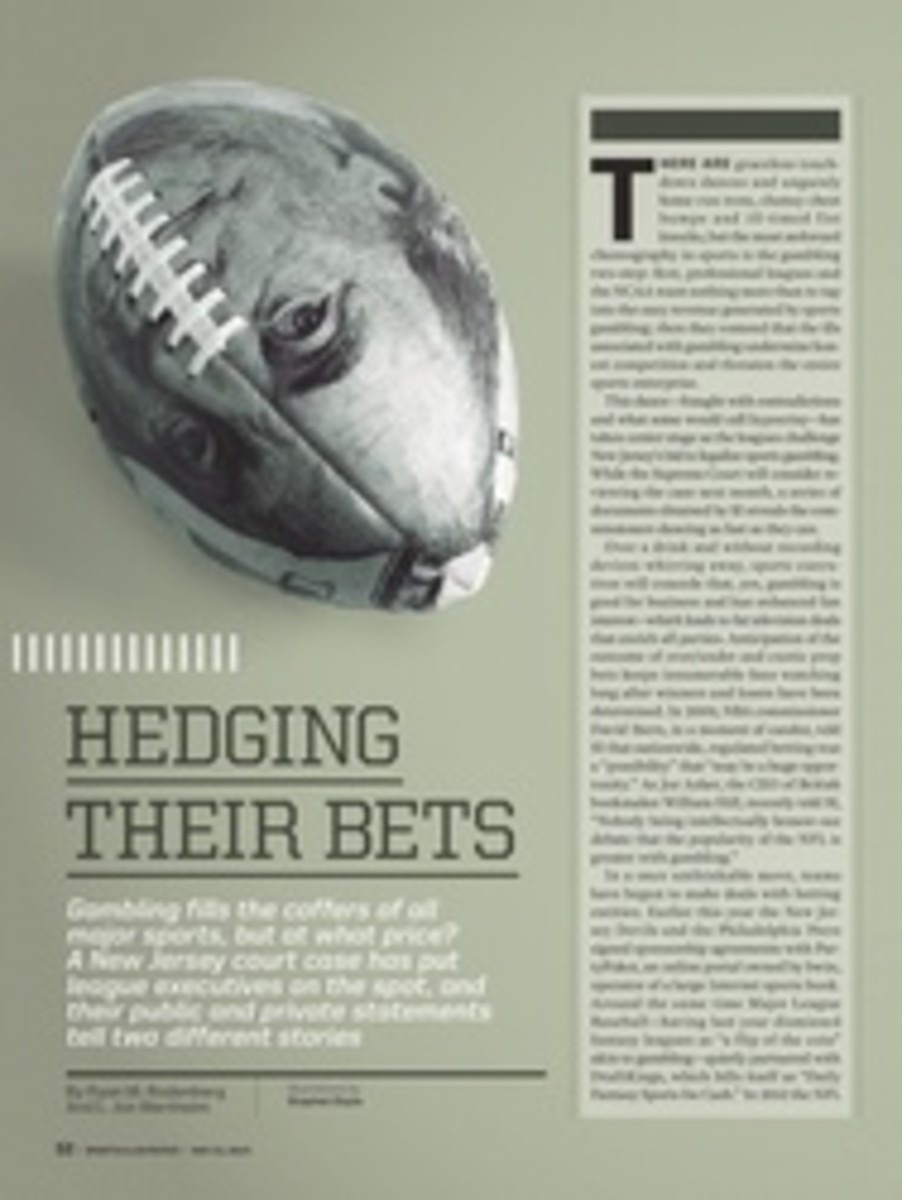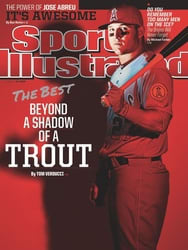
The Case for ... An NFL D League
IN HIS FIRST notable comments since being named NFL executive vice president of football operations in March, Troy Vincent said pro football needs a developmental league. The NFL does nothing without purpose, so Vincent was clearly looking to gauge public reaction. As someone who was part of a previous NFL developmental league, the World League of American Football, I believe the concept is ripe for revisiting—this time as a domestic project.
In 1991, I became the general manager of the Barcelona Dragons, a post that was, to paraphrase the old U.S. Navy slogan, not just a job, but an adventure. Our first touchdown in Barcelona—a seam pattern to our tight end for 70 yards—drew polite golf applause; when our kicker converted the extra point the crowd at Olympic Stadium erupted. Fans cheered at the wrong times and did the Wave the entire game. Teams in markets such as London and Frankfurt fared better, but in Spain and elsewhere the league struggled to balance two worthy but inconsistent missions: introducing American football overseas and developing NFL-ready talent.
In the end NFL owners decided the investment was not worth the return and scrapped the World League's descendent, NFL Europe, in 2007. As for player development, we found that NFL coaches preferred to have players working and learning in their teams' off-season programs rather than playing overseas. When players did go to Europe, many lagged behind their teammates when they reported to NFL training camps because they were fatigued after the spring season.
Coaches will also tell you that with the strict limits today's collective bargaining agreement places on off-season practice time and padded workouts, there's less time to coach, teach and develop young players—which makes the need for a D league even greater. And without the pressures faced by the European versions, a domestic league could prosper—the focus would be player development, not intercontinental marketing.
There are two spots on the calendar when a D league would fit. The NFL's CBA mandates that players are free of team-organized activities for roughly three months following the end of the season. This period could be a window for a D league, providing playing opportunities but still allowing months of recovery time before training camps open in late July. On the other hand, playing in the fall would give the league the same rhythm as the NFL season and might allow teams a limited number of call-ups. Imagine an NFL version of baseball's Triple A shuttle, with fringe players being promoted and demoted.
On the field the NFL is more complex than ever, with coaches drawing increasingly sophisticated schemes. A developmental league with an NFL affiliation would allow clubs to handpick coaches schooled in each team's philosophy.
Other failed leagues—the PSFL, XFL and UFL—had neither the NFL stamp of approval nor the safety net of NFL funding. And the Arena Football League, though it has had some success stories, plays a different game. A new D league would look like the NFL and be coached like the NFL, preparing players to succeed at the top level.
Who would play? Training camps begin with 90 players, with rosters reduced to 53 over a month. A developmental league would give borderline players a viable option, opening up hundreds of jobs. There are markets (and networks) that would energetically welcome an NFL-sanctioned football league, even if the level of play isn't quite NFL-caliber. If they build it, we will come.
Imagine an NFL version of baseball's Triple A shuttle, with fringe players being promoted and demoted.
PHOTO ILLUSTRATION
MICHAEL ZAGARIS/GETTY IMAGES; PHOTO ILLUSTRATION BY NICOLE ZIGMONT

